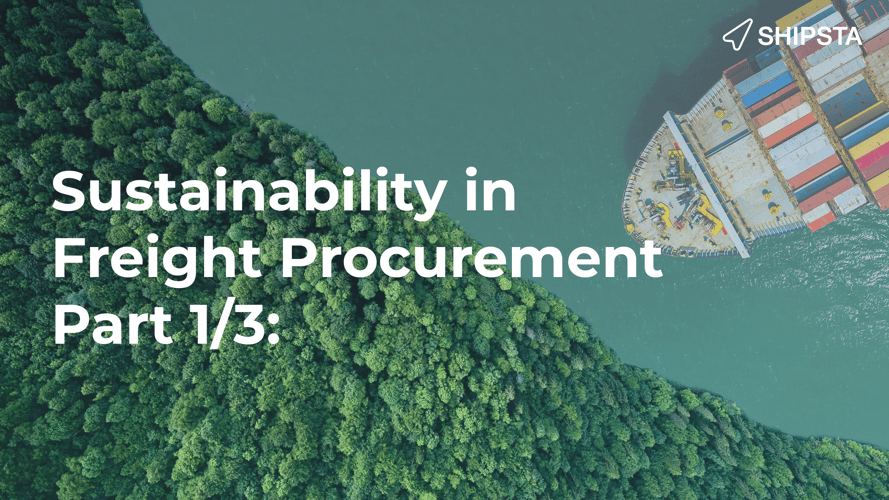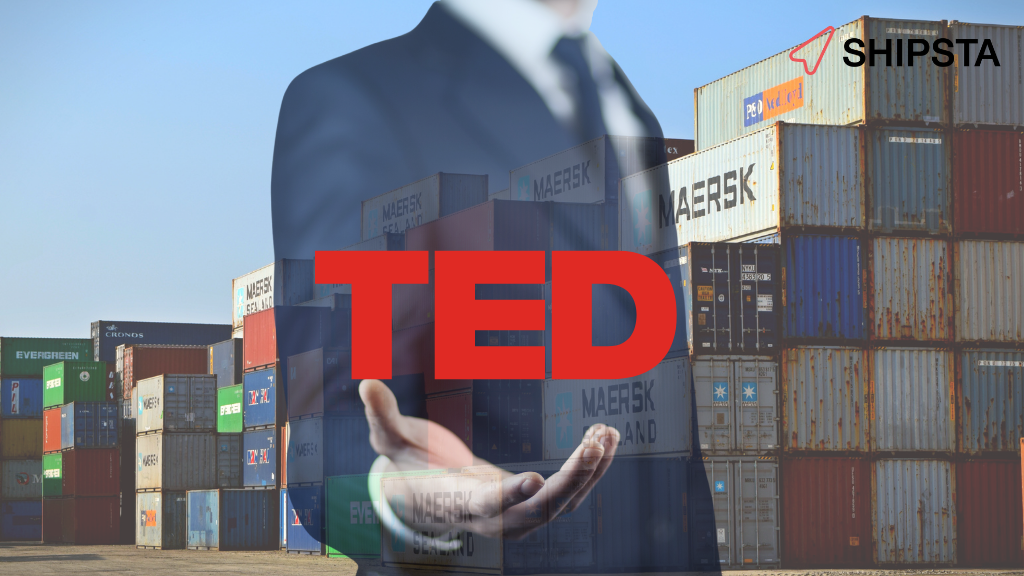 Climate change and sustainability are massive topics in freight procurement right now. But if you were procuring freight just ten years ago, sustainability would barely be on your radar.
Climate change and sustainability are massive topics in freight procurement right now. But if you were procuring freight just ten years ago, sustainability would barely be on your radar.
So, what’s driving this focus on reducing CO2 emissions? And how will sustainability
impact your freight procurement strategy? Here are the facts and figures that break down what’s happening right now…
What are the current sustainability challenges?
1. Global freight transport makes up 7% of CO2 all emissions
According to a study by the International Transport Forum, global freight transport emissions are responsible for 7% of all CO2 emissions – that’s around 2,108Mt of CO2 per year.
If you think 7% doesn't sound too bad, keep in mind the entire aviation industry only contributes 2%.
With supply chains globalising and becoming longer and more complex over the last few decades – it’s no surprise global freight transport makes up such a big chunk of CO2 emissions.
And it’s not just CO2 that’s causing issues. Shipping also contributes to climate change through emissions of Black Carbon, tiny black particles, produced by the combustion of marine fuel.
2. Extreme weather is disrupting transport routes across the world
If you feel like a new natural disaster hits the headlines every week, you’re not wrong. In fact, in 2020 there was an average of eight per week, reaching a total of 416 natural disasters globally!
And as CO2 emissions have risen, so have the number of natural disasters. According to one report, they’ve tripled over the last 50 years.
These tragic events have a huge impact on the supply chain, damaging rail networks and transport roads and preventing safe sea fairing. This year alone, transport routes have been ravaged by floods in Europe and China causing massive disruptions to the supply chain – and there’s no telling when the next incident will occur.
3. Pressure from investors and consumers to reduce transport emissions is mounting
Sustainability has truly become a global movement – and it’s impacting how people purchase goods. A survey of 18,900 consumers worldwide found 57% of respondents would change their purchasing habits to reduce their environmental impact.
And when consumer habits change – investors take notice. Companies are now under enormous pressure from both consumers and investors to track and reduce their carbon emissions for all aspects of business, including shipping.
4. Businesses are now being measured on Scope 3 emissions
Sustainability isn’t a new topic - it’s been on many companies’ radars since the 1980s. So, why are procurement teams only starting to feel the pressure to become greener in the last decade or so?
In previous years, companies were primarily measured on their Scope 1 and 2 emissions – but now they are expected to track and report Scope 3 emissions too!
So what's included in these different emissions scopes, and why does this impact you?
- Scope 1 includes any emissions directly produced by the company, like manufacturing or company cars.
- Scope 2 are emissions created by the energy companies purchase for their own use, like electricity and heating.
- Scope 3 emissions cover all other indirect emissions, like those produced by investments, consumer use of products and (you guessed it!) shipping and transportation.
The expectation to track and report all Scope 3 CO2 emissions is putting real pressure on procurement teams, who are responsible for reducing transport emissions.
What sustainability challenges are on the horizon?
1. The EU is getting tough on shipping emissions
In the past, shipping has often sailed (excuse the pun!) under the radar of governments’ carbon-reduction targets. But now other industries are cleaning up their act, and the demand for freight transport is increasing – policymakers are taking notice.
In just the past month, The European Union’s Emissions Trading System (EU ETS) has released a new policy proposal, Fit For 55, that aims to reduce carbon emissions in the bloc by 55% by 2030.
Shipping emissions will be included in the ETS for the first time, meaning ship owners will have to buy permits from the EU when their ships pollute or face paying a fine.
The EU ETS would affect around two-thirds of maritime transport emissions (90 million tonnes of CO2) as it covers all large ships (above 5,000 gross tonnage), no matter which flag they fly.
This crackdown on transport emissions by the EU is likely to get even tougher. As a spokesperson stated, the EU would need to cut transport emissions by 90% to reach the block’s goal of being carbon neutral by 2050.
2. Sea freight emissions are rising rapidly
Currently, 80% of all goods are moved by sea, which contributes 3% to total global CO2 emissions. But it’s no secret the sea freight demand is on the rise – which means emissions are on the rise too.
According to the Organization for Economic Co-operation and Development, sea freight emissions will rise by between 50% and 250% by 2050 if nothing improves.
This forecast is set to put procurement teams and ship owners under huge pressure to reduce emissions and prevent this figure from becoming a reality.
3. The shipping industry is calling for carbon taxes
Groups that represent more than 90% of the global fleet are calling on the world’s government to tax carbon emissions produced by shipping.
A global tax would need to be negotiated through the IMO – and right now it’s not clear exactly what that tax would look like. However, it would likely have an impact on shipping budgets and end consumers. Maersk’s chief executive Soren Skou said a global shipping tax could equate to around 6 cents for every pair of sneakers shipped.
So with even the shipping industry calling for CO2-reduction incentives, what can you do to start decreasing your carbon footprint?
Leading your company's freight procurement into a carbon-neutral future can feel challenging, but it doesn't need to be. Our unique-to-the-market procurement and sustainability platform, ShipstaPLANET, makes it easy to uncover your current carbon baseline and start reducing your emissions. It enables you to prevent CO2 emissions at the point of procurement, so you can cut your emissions before you ship. Click the button below to learn more about how it can help you start your journey to CO2 neutral.
About SHIPSTA
SHIPSTA is a digital platform that connects shippers and carriers to ensure a frictionless procurement process for spot and contract buying. It automates complex tasks, provides unrivalled visibility and supports fast data-driven decision making.
Designed and built by experts in logistics procurement, SHIPSTA is bringing transparency, automation and efficiency to the global logistics industry. It is used by some of the world’s largest companies to respond to market volatility, control freight costs and manage risk. The company was founded in 2015 and is based in Mertert, Luxembourg and Hamburg, Germany.




